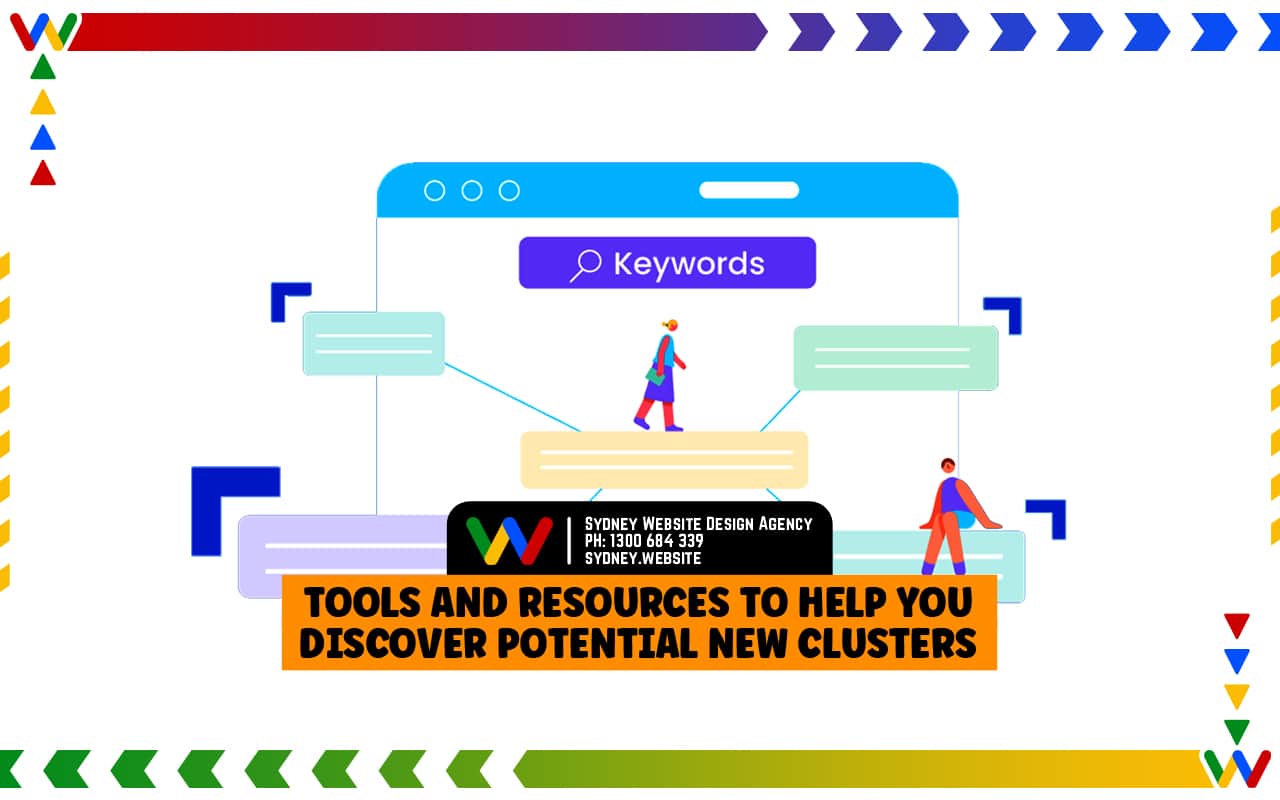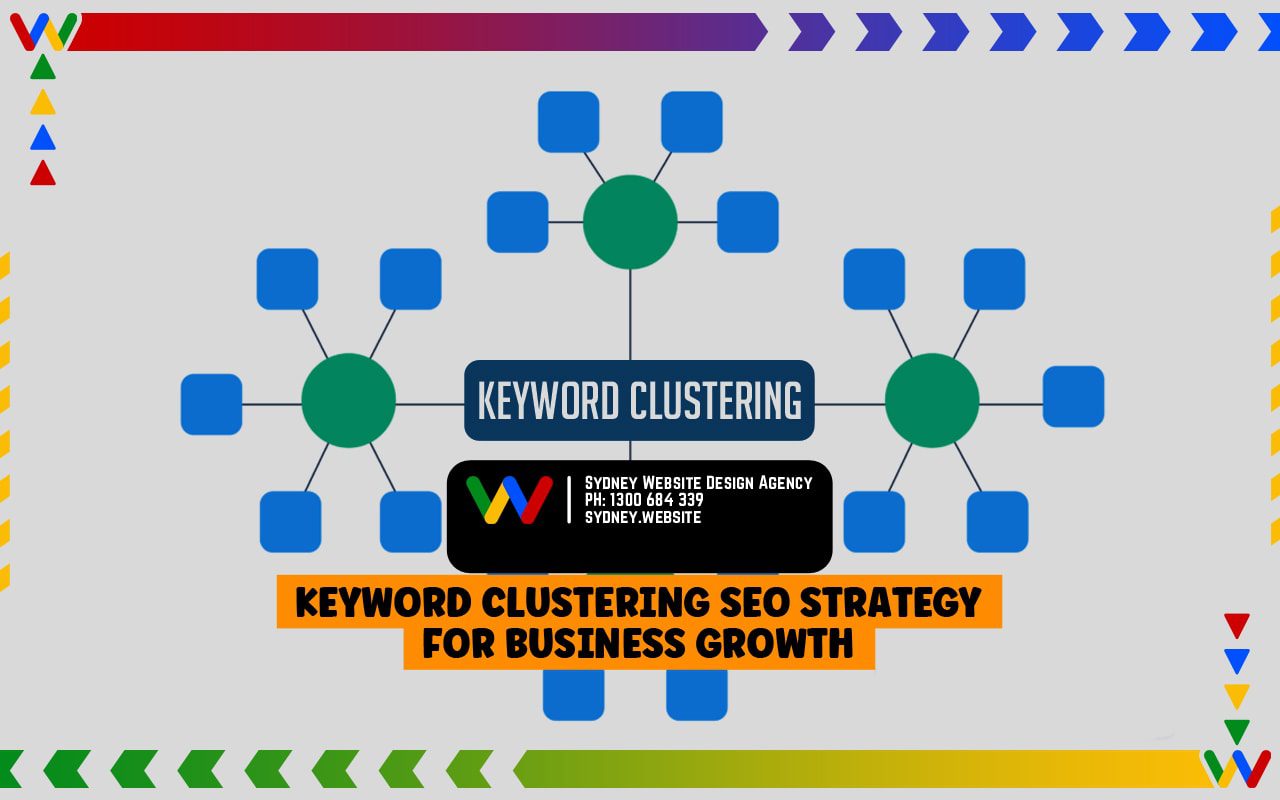Master Keyword Clustering for Competitive Edge
Do you want to get ahead of your competitors in SEO? Keyword clustering can be a powerful tool for success. It involves grouping related keywords and phrases into clusters, which can help you create more targeted content that appeals to search engine users. This blog post will explain what keyword clustering is, how it works, and why it’s important for SEO success. We’ll also discuss some tips on how to use keyword clustering effectively so that you can start leveraging this technique to get an edge over the competition.
Introduction
Do you want to stay ahead of the competition and ensure your business is seen as a leader in its field? If so, keyword clustering is an essential SEO strategy that every business needs to master. Keyword clustering allows businesses to group related keywords together into clusters, enabling them to create more relevant content for their target audience and improve their search engine rankings.
In this comprehensive guide, we’ll explore the benefits of using keyword clusters, how they can be implemented effectively, some examples of successful keyword cluster tools and strategies and advanced techniques for optimising your keywords. We’ll also provide tools and resources for discovering potential new clusters, as well as common mistakes to avoid when creating a cluster strategy. Finally, we’ll cover best practices for creating relevant content with your chosen clusters and how to monitor and measure the performance of your clusters.
Table of Contents
- What is Keyword Clustering?
- Benefits of Using Keyword Clustering
- Steps to Implementing Effective Keyword Clusters
- How to Do Keyword Clustering the Right Way
- Advanced Techniques for Optimising Your Keywords
- Tools and Resources to Help You discover Potential New Clusters
- Common Mistakes To Avoid When Creating a Cluster Strategy
- How To Monitor and Measure The Performance Of Your Clusters
- Best Practices For Creating Relevant Content With Your Chosen Clusters
- FAQs Keyword Clustering
- Moving Forward with the Right Keyword Clustering Strategy
Yes, I Want to Discover the Power of Keyword Clustering Now
No, I Don’t Want to Get Ahead of the Competition
What is Keyword Clustering?

Keyword clustering is a technique that involves organising related topics and keywords into groups or clusters. This allows you to create content focused on specific topics, which can help improve your SEO rankings. It also helps you ensure that the content is relevant to the users who are searching for it. For example, if someone is looking for “affordable laptops”, grouping related terms such as “cheap laptops”, “inexpensive laptops” and “budget laptops” into one cluster will likely produce better search results, than if those words were spread out across multiple blog posts.
How Does Keyword Clustering Work?
To make keyword clustering work effectively, you need to first identify high-volume search phrases that relate to the topic of your content. These are the keywords and phrases that you’ll be targeting with your keyword clusters. You can use a tool such as Google AdWords or any other keyword research tool to help you find these search terms. Once you’ve identified potential keywords for your cluster, you can then start grouping keywords by using keyword grouping tools to put them into related groups. This will help make sure that the content is focused on a specific topic, which makes it easier for search engines to understand what the page is about.
Benefits of Using Keyword Clustering

Keyword clustering is a powerful tool that can be used to optimise search engine results and increase the visibility and reach of websites. With keyword clustering, a website owner or SEO expert can group related topics of multiple keywords together to better target specific audiences. By grouping similar keywords together, it is easier for search engines to rank and find related keywords and content higher in the search engine results pages (SERPs).
The benefits of using keyword clustering include:
1. Increased Visibility
By grouping keywords into clusters, it becomes easier for search engines to identify and understand how your content should be ranked within the SERPs of search queries. This makes it easier to target potential customers who are searching for terms that you have identified as being related to your services or products.
2. Improved User Experience
Grouping these keyword groups and clusters together helps users find what they’re looking for more efficiently, as well as helping them explore further into areas that they may not have considered before. This method makes it easier for webmasters to create content around these clusters of keywords so that there is an increased chance of their website appearing on SERPs when those words are searched for.
3. More Efficient Pay Per Click Advertising
Keyword clustering can also help businesses save money by improving their PPC campaigns. By grouping similar words together, businesses can target more accurately, which in turn leads to higher return on investment from PPC campaigns and better use of budgets allocated towards marketing initiatives through the use of PPC advertising platforms such as Google Ads or Microsoft Bing Ads.
4. Improved Content Marketing Strategies
Keyword clustering helps marketers create targeted content strategies that will draw in readers from all over the web and improve overall visitor engagement with content planning their site by providing relevant information for each topic cluster covered within the content pieces created around those topics.
Keyword clustering is an essential tool for SEO and website optimisation. By grouping related topics together, it becomes easier for search engines to understand what your content is about and rank it higher in the SERPs. It can help businesses save money on PPC campaigns and create more targeted content marketing strategies that will draw in readers from all over the web. If you are looking to increase your visibility online and improve your overall user experience, then implementing keyword clusters could be a good strategy for you to consider.
Steps to Implementing Effective Keyword Clusters

Creating effective keyword clusters is an important part of any SEO or website optimisation strategy. By grouping related topics together, it makes it easier for search engines to understand what your content is about and rank it higher in the SERPs.
Keyword clustering can help businesses save money on PPC campaigns and create more targeted content marketing strategies that will draw in readers from all over the web. In this section, we’ll discuss some key steps you should follow when implementing effective keyword clustering settings and clusters into your online presence.
1. Research topics to identify related keywords
Start by researching your niche and the topics within it to create a list of relevant keywords. Seek ideas from industry publications, Google Ads Keyword Planner, online forums and more.
2. Group similar keywords together
Once you’ve identified all the relevant keywords for your business, group them into clusters based on their similarity to other keywords. This will help search engines determine how they should be ranked in SERPs when users search for those terms.
3. Determine relevance of each cluster
Think about how each keyword cluster relates to the topic you want to cover to decide which ones are most important and relevant to your content marketing strategy and should receive priority when you create content around them.
4. Create targeted content pieces
Now that you’ve identified the most relevant keywords and grouped them together, start creating content pieces specifically tailored to each keyword cluster. Make sure to use all the keywords both in your headlines and throughout the body of your text for maximum visibility in SERPs.
5. Analyse results
Lastly, measure and track how successful your keyword clusters are by analysing the performance of each content piece related to those keywords and adjust as needed for better results in the future.
Keyword clustering is a powerful tool for improving website visibility and user engagement, if used correctly. Get started now by researching relevant topics within your niche, grouping similar keywords together, determining the relevance of each cluster, creating targeted content pieces, and measuring the performance of each piece. With these steps implemented, you’ll be well on your way to achieving better results with SEO and PPC initiatives.
By following these steps, businesses can use keyword clusters to improve their SEO efforts and gain higher visibility within SERPs, resulting in increased website traffic and more conversions. Implementing keyword clustering can also help businesses save money on PPC campaigns and create more targeted content marketing strategies that will draw in readers from all over the web.
It can also improve overall visitor engagement with their site by providing relevant information for each topic cluster covered within the content pieces created around those topics. With these steps implemented, you’ll be well on your way to achieving better results with SEO and PPC initiatives.
How to Do Keyword Clustering the Right Way

Imagine having a treasure map with dozens of X marks, each representing a potential goldmine of online visibility and organic traffic. Welcome to the world of keyword clustering, where savvy marketers and SEO enthusiasts unlock the secrets to conquering search engine rankings. If you’re determined to navigate the vast digital landscape and claim your rightful place at the top, mastering the art of keyword clustering is an essential skill.
In the vast ocean of keywords, your website’s success depends on finding the right islands of relevance and strategically connecting them. Keyword clustering is the compass that guides you, helping you understand the intricate relationships between keywords and their impact on search engine algorithms. It’s the ultimate puzzle-solving adventure, where each piece you uncover propels you closer to unlocking the treasures of online success.
But here’s the catch: keyword clustering is no longer a mere buzzword. It’s a necessity in today’s competitive online arena. With search engines becoming increasingly sophisticated, relying solely on individual keywords is like trying to build a sandcastle in a tsunami. To stand tall amidst the digital waves, you must harness the power of keyword clustering the right way.
Keyword clustering is a systematic approach to organising and grouping related keywords to improve your website’s SEO and content strategy. Follow these steps to effectively implement the keyword clustering process and unlock its potential for boosting your online visibility.
Step 1: Conduct Comprehensive Keyword Research
Start by conducting thorough keyword research to identify relevant keywords for your website. Use a combination of keyword research tools like Google Keyword Planner, SEMrush, or Ahrefs to discover keywords with high search volume and relevance to your niche or industry. Look for keywords that align with your target audience’s search intent, and consider both short-tail and long-tail keywords.
Step 2: Identify Seed Keywords and Primary Topics
From your research, identify a set of seed keywords that represent the primary topics or themes you want to focus on. These seed keywords will serve as the foundation for building extensive keyword list of clusters. For example, if you have a website about healthy recipes, your seed list of keywords could be “healthy breakfast recipes,” “low-carb dinner ideas,” or “vegan desserts.”
Step 3: Analyse Keyword Relationships and Groupings
Next, analyse the relationships between your selected keywords. Look for common themes, semantic connections, and overlapping search intent. Group keywords that share similarities into clusters. This process can be done manually by creating keyword groups and reviewing internal links between the keywords, or by using keyword clustering tools that analyse keyword relationships and suggest groupings.
Step 4: Determine Cluster Types
Identify the types of clusters that align with your content strategy. There are several types of keyword clusters you can utilise, including:
Step 5: Create Content Hubs and Cluster Pages
Build a content architecture that incorporates your seed keyword and clusters effectively. Create content hubs or pillar pages centred around your primary topics or seed keywords. These content hubs should provide comprehensive and authoritative information, serving as the main hub for the cluster. Then, you create keyword clusters and cluster pages that target specific keywords within each cluster and link them back to the corresponding content hub.
Step 6: Optimise Content and Internal Linking
Ensure that each piece of content within a cluster is optimised for its respective keyword. Optimise page titles, meta descriptions, headings, and content to align with the targeted keyword.
Utilise internal linking strategies to strengthen the cluster structure. Link cluster pages back to the content hub, and interlink relevant cluster pages within the same cluster. This internal linking strategy helps search engines understand the relationships between your pages and boosts the overall SEO value.
Step 7: Monitor and Refine
Regularly monitor the performance of your keyword list and clusters using analytics tools like Google Analytics or SEO platforms. Track rankings, organic traffic, and user engagement metrics for each cluster. Analyse the data and make necessary adjustments, such as updating content, optimising keywords, or expanding clusters based on user behaviour and search trends.
Keyword clustering is a powerful technique for enhancing your website’s SEO and content strategy. By following this step-by-step process, you can effectively organise and optimise your keywords, improve search engine visibility, and attract targeted organic traffic. Embrace the art of keyword clustering, and let it become your compass to navigate the ever-evolving landscape of search engine optimisation.
Advanced Techniques for Optimising Your Keywords

Search engine optimisation (SEO) is an invaluable strategy for any business. It helps to increase traffic to your website, boost conversions and ultimately drive sales. One of the key aspects of SEO is keyword optimisation – using the right keywords to rank higher in search engine results pages (SERPs). Here are some advanced techniques you can use to optimise your search engine optimisation and your keywords:
1. Utilise Long-Tail Keywords
Long-tail keywords are three or more words that are specific and highly targeted. These types of short tail keywords tend to have less competition than more keywords or generic ones, so they may be easier for you to rank for in SERPs. Plus, when people are searching for something specific, it’s a much more qualified lead.
2. Perform Keyword Research
You should always research your keywords to ensure that you’re using the ones that are most relevant for your content and will drive the most organic traffic. Focus on finding high-quality, relevant keywords that can help you improve your SERP rankings.
3. Monitor Your Search Rankings
Monitor how well your website is ranking for each keyword by setting up a dashboard. You should also check back in on the metrics regularly to make sure you’re staying ahead of the competition.
4. Incorporate Synonyms and Related Words
Keywords don’t have to be exact matches, they can also include synonyms and related words. This helps search engines better understand what your content is about and increases your chances of appearing higher up in SERPs for that keyword.
5. Utilise Structured Data Markup
By adding structured data markup to your website, you can help search engines understand what your page is all about, so it may rank higher for relevant keywords. It’s similar to adding headers or meta descriptions but using code instead of text search engine rank tracking in Google Analytics or a similar tool. This allows you to identify which keywords are performing best and make adjustments if necessary.
6. Use Related Keywords
Include related keywords in addition to the primary keyword you’re targeting to increase visibility and attract more organic traffic. You can use tools like Google Trends to identify related keywords that people are searching for and then include them in your content.
By following these advanced techniques, you will be able to optimise your keywords and improve your search engine rankings. This will help you attract more high-quality leads, boost conversions, and ultimately increase sales.
Tools and Resources to Help You discover Potential New Clusters

Tools and resources can be invaluable in lead generation for customers. They provide valuable information that can help inform decisions about which products, services, or content to focus on when marketing and developing strategies. They can help identify potential new clusters of customers that may have been previously overlooked.
For example, by using keyword research tools such as Google Trends or SEMrush, businesses can identify terms and phrases that are commonly used by their target audiences. This enables them to develop content around those topics, increasing their visibility and drawing in more leads. Similarly, analytics tools like Google Analytics allow businesses to see how their website is performing in terms of traffic and conversions. With this information, they can adjust their SEO strategy accordingly and refine their target audience further.
Overall, tools and resources play a vital role in helping businesses identify both existing clusters of customers and potential new ones through enhanced audience segmentation and targeting capabilities. By leveraging these solutions effectively, businesses can maximise lead generation efforts and drive more sales for their products or services. Some common tools available for getting more customers are as follows:
Google Ads Keyword Tool
The Google Ads Keyword Tool is a powerful tool that can give keyword insights and help you discover potential new keywords grouped clusters of related keywords. It will show you keyword ideas and suggest possible combinations of words, as well as estimates for search volumes and cost-per-click bids.
Ubersuggest
Ubersuggest is a free keyword research tool from Neil Patel that offers comprehensive keyword research capabilities. It helps you brainstorm new long-tail keywords, see which ones are trending in your industry, and get an estimate of the competition level for each term.
SEMrush
SEMrush is an advanced SEO platform with many useful features, including its keyword research tool. This allows you to quickly find and analyse related keywords, check search volume data and competition levels, and get estimates for cost-per-click bids.
Keyword tool IO
Keyword tool IO is a powerful keyword research tool that helps you discover new keyword ideas by using Google autocomplete and keyword data here. It’s great for finding long-tail keywords that are specific to your industry or product offering.
Tools such as social media monitoring platforms also enhance lead generation efforts by providing insights into customer behaviours and preferences. By tracking conversations on social media platforms, marketers can glean valuable data about what type of content resonates with their target audiences. This helps them tailor messages to the right people at the right time for maximum impact.
It gives them the opportunity to engage directly with potential customers via comments or direct conversations, something that would not be possible without the use of social media monitoring tools.
By using these tools and resources, you can easily uncover potential clusters of new keywords to help boost your website’s rankings in SERPs. With the right strategies and tactics, you can use these keywords to improve your visibility and capture more organic traffic from search engines.
Common Mistakes To Avoid When Creating a Cluster Strategy

When creating a keyword cluster strategy, there are some common mistakes to avoid, ensuring the most successful outcome. Firstly, it’s important to remember that not all customers are the same, and you should research who your target audience is and tailor the clusters accordingly. Businesses should avoid relying solely on keyword search tools for lead generation. Instead, they should use a combination of social media monitoring platforms and other methods to gain a more accurate picture of their target audience.
Marketers should be careful with segmentation, as too many segments can make marketing efforts difficult to manage. By avoiding these errors, businesses can create an effective cluster strategy that will help them generate more leads and better understand their target audience.
Overall, clustering customers is an effective way to boost lead generation efforts and get a deeper understanding of customer behaviour. By leveraging the right tools and resources, businesses can uncover potential new clusters of related keywords that can be used to improve their visibility in SERPs. They should avoid common mistakes when creating a cluster strategy and pay attention to proper segmentation for maximum results. By following these steps, businesses can drive more sales for their products or services and build stronger relationships with customers.
How To Monitor and Measure The Performance Of Your Clusters

Once you have created your clusters, it is important to monitor and measure their performance to ensure that they are delivering the desired results. To accomplish this, businesses should track key metrics such as clicks, conversions, and customer engagement. Businesses can use A/B testing to compare different clusters and see which ones are performing better.
Businesses should also stay up-to-date on industry trends and check for any changes in customer behaviour, as this can affect cluster performance. Businesses should use analytics tools like Google Analytics or Kissmetrics to get an overall view of how their clusters are performing over time.
By regularly tracking and measuring cluster performance, businesses can make informed decisions about their marketing strategies and ensure that they are achieving maximum results from their clusters. This will help them stay ahead of industry trends and adjust their strategies accordingly. By monitoring and measuring cluster performance, businesses can generate more leads and better understand their target audience.
Keyword clustering fundamentals with customers is an effective way to boost lead generation efforts and get a deeper understanding of customer behaviour. By leveraging the right tools and resources, businesses can uncover potential new clusters of related keywords that can be used to improve their visibility in SERPs.
They should avoid common mistakes when creating a cluster strategy and pay attention to proper segmentation for maximum results; Businesses must monitor and measure the performance of their clusters to make sure that they are delivering desired results. By following these steps, businesses can drive more sales for their products or services and build stronger relationships with customers.
By taking the time to create an effective cluster strategy and monitoring its performance, businesses can improve their lead generation efforts and gain invaluable insights about customer behaviour. This will help them stay ahead of industry trends and adjust their strategies accordingly. Clustering customers is a powerful tool that can help businesses get more leads and better understand their target audience. With the right approach and tools, businesses can create an effective cluster strategy that will result in greater success for their business.
Best Practices For Creating Relevant Content With Your Chosen Clusters

Creating relevant and compelling content is crucial for businesses and creators alike. One effective strategy to ensure your content resonates with your target audience is by utilising clusters. Clusters are thematic groups of related keywords that help you understand and address the diverse interests and needs of your audience.
Dive Deep into Audience Research
The foundation of creating relevant content lies in understanding your audience inside out. Conduct thorough research to identify your target audience’s preferences, pain points, and interests. Utilise analytics tools, surveys, social media listening, and keyword research to gather insights. Once you clearly understand your audience, develop clusters that align with their needs and aspirations.
Identify Key Themes and Topics
Based on your research, identify key themes and topics that resonate with your audience. Clusters allow you to organise related keywords around these themes. By categorising keywords into clusters, you can create a content road map that covers a wide range of topics, ensuring your content remains relevant and comprehensive.
Optimise Content Around Cluster Keywords
Once you have established clusters, optimise your content by incorporating relevant keywords from each cluster. Avoid keyword stuffing, instead, focus on crafting high-quality, informative content that naturally integrates the cluster keywords. This approach enhances your content’s SEO, making it more discoverable by search engines while also resonating with your audience.
Create Pillar Content
Pillar content forms the backbone of your content strategy. It serves as comprehensive, authoritative content that covers a broad topic related to your clusters. Create in-depth articles, guides, or videos that thoroughly address the core themes of each cluster. Pillar content not only establishes your expertise, but also helps boost your search engine rankings and attracts organic traffic.
Develop Cluster-Specific Content
To cater to the diverse interests within each cluster, create cluster-specific content. These can be articles, blog posts, videos, podcasts, or social media posts that delve deeper into specific aspects of a particular cluster. By focusing on niche topics, you demonstrate a nuanced understanding of your audience’s needs, which enhances engagement and builds credibility.
Encourage Interaction and User-Generated Content
Engagement is key to building a loyal audience. Encourage interaction by incorporating calls-to-action, asking for feedback, and inviting user-generated content. User comments, reviews, and testimonials not only provide valuable insights but also foster a sense of community. Actively respond to comments and engage with your audience to establish a genuine connection and build trust.
Analyse and Refine
Constantly monitor the performance of your content and analyse metrics such as engagement, click-through rates, and conversions. Use this data to refine your content strategy and make informed decisions. Identify clusters that generate the most engagement and replicate their success in future content. Stay adaptable and adjust your approach based on evolving audience preferences and industry trends.
By harnessing the power of clusters, you can create content that captivates your audience’s attention, addresses their specific interests, and drives meaningful engagement. Remember to conduct thorough audience research, optimise your content with relevant cluster keywords, and provide a mix of pillar and cluster-specific content. By consistently refining your approach and encouraging audience interaction, you’ll be well on your way to creating relevant and compelling content that resonates with your chosen clusters.
Keyword Clustering Frequently Asked Questions

What is keyword clustering?
Why is keyword clustering important?
How does keyword clustering work?
What tools can I use for keyword clustering?
How can I perform keyword clustering manually?
Can keyword clustering help with long-tail keyword research?
How often should I update my keyword clusters?
Can keyword clustering help with PPC (Pay-Per-Click) advertising?
How can I use keyword clustering to improve my SEO content strategy?
Keyword clustering involves grouping similar keywords based on the same search intent to create comprehensive content. By analysing keyword difficulty and identifying secondary keywords, you can target lower search volume phrases that still provide value. Using a keyword clustering tool and Google Sheets, you can organise these keywords into clusters.
This helps in creating multiple pages or even one page that covers a particular keyword and related terms comprehensively. The keyword grouping process also ensures that you avoid irrelevant search queries and focus on high-value keywords.
How does semantic keyword clustering benefit my web pages?
Semantic keyword clustering helps in creating content that addresses the same keyword and its variations, leading to better search engine optimization.
By using tools like Google Search Console and its pages tab, you can identify which clusters should be on the same page or split across multiple pages.
This strategy not only improves your search engine optimization but also helps you target the highest search volume keywords effectively, increasing your chances of ranking higher in google search results.
Moving Forward with the Right Keyword Clustering Strategy

By understanding the importance of keyword clustering and its benefits, you can optimise your website content, improve SEO efforts, and provide a more valuable user experience. Utilising effective tools and techniques for keyword clustering, regularly updating your clusters, and adapting to changes in search trends and algorithms will help you maintain relevance and drive targeted traffic to your website.
With a well-executed keyword clustering strategy, you can enhance your online visibility, increase conversions, and propel your digital presence forward. Stay proactive, keep refining your clusters, and embrace the power of keyword clustering as you move ahead in your digital marketing journey.




















































